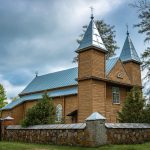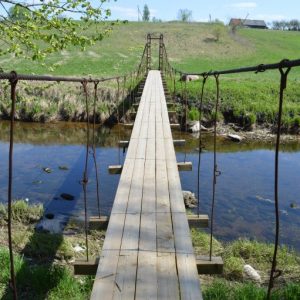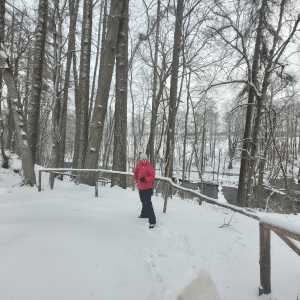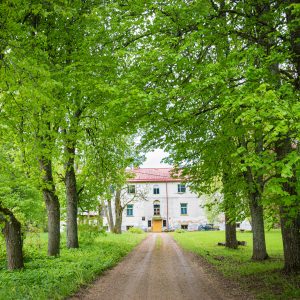
Your journey has brought you to Cibla – a place with a long and fascinating history, a terrain worthy of Gauja Valley, and the folk wisdom of Latgale at every turn. Here you will notice the rows of ancient castle mounds along the border of Latgale, which have once bestowed power upon this place. The most widely known and oldest of them is the Castle Mound of Ķīši. Fascinated by the beautiful nature of the area, many poets have expressed its beauty through verses and lyrics. The Eversmuiža St. Andrew’s Roman Catholic Church is the first object of interest you will come across during your walk around Cibla.

The story will guide you by one of the largest and most peculiar rivers in Ludza Municipality – the Ludza River. In the documents of the past centuries, which are written in Russian, the river is called ‘Lža’. However, later it became known as ‘Ilža’ among the local residents. The wire rope bridge over the Ilža River leads to a somewhat mystical and unworldly place called the ‘Finger of God’ of Cibla, locally known as the ‘place of healing’. It is a natural formation, wisely used by our Baltic ancestors – seers, kriwes, priests, and wise men to create a place where the human soul could rest, whereas the body could be cleansed from negative energy and absorb the energy of nature.

In 1910, a deposit of more than 1100 coins was discovered in a tillage in Zeltiņi village, located on the right bank of the Ludza River between Eversmuiža and Cibla Cemetery Hill. This hidden treasure was discovered during a collective flax harvesting and so it was named the ‘Deposit of Eversmuiža’. On the other side of the Ludza River, you can see an impressive forest-covered hill. It is the Cibla Cemetery Hill – a castle mound on the right bank of the Ludza River, opposite Eversmuiža. It takes its name from the cemetery, which used to be located on the top of the hill.

The story has brought us to the most important building of Cibla – the Eversmuiža manor house. Eversmuiža, much like the Šlokenbeka Manor and Rogosinsky Manor in Estonia, is among the few fortified manor-type buildings in the Baltic States. The manor itself was most likely built in the 15th–16th century. Now that our walk is nearly over, let us provide you with a little more profound insight into the lives of the ancestors of Cibla residents by means of a passage from a letter by Antons Stripāns to his grandson and in the closure sonorously voices of folklore group "Iļža".